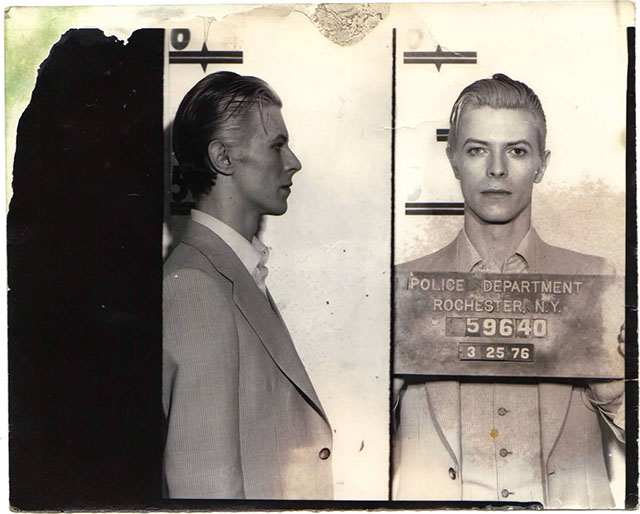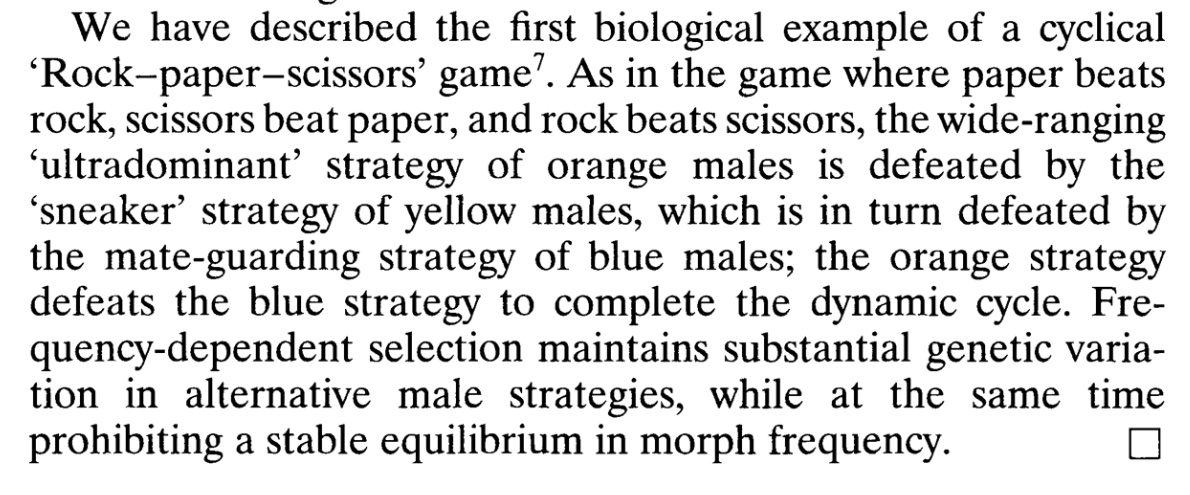Click here and press the right key for the next slide.
(This may not work on mobile or ipad. You can try using chrome or firefox, but even that may fail. Sorry.)
also ...
Press the left key to go backwards (or swipe right)
Press n to toggle whether notes are shown (or add '?notes' to the url before the #)
Press m or double tap to slide thumbnails (menu)
Press ? at any time to show the keyboard shortcuts
Applications and Limits of Game Theory
‘Many events and outcomes prompt us to ask: Why did that happen? [...] For example, cutthroat competition in business is the result of the rivals being trapped in a prisoners’ dilemma’
(Dixit et al., 2014, p. 36)

| Prisoner X | |||
| resist | confess | ||
| Prisoner 59640 | resist | 3 3 | 0 4 |
| confess | 4 0 | 1 1 | |
‘Many events and outcomes prompt us to ask: Why did that happen? [...] For example, cutthroat competition in business is the result of the rivals being trapped in a prisoners’ dilemma’
(Dixit et al., 2014, p. 36)
Games with the Prisoner’s Dilemma structure arise in:
bower birds (maraud/guard nests)
business organisations (product pricing)
countries (international environmental policy)
individual adult humans (suspects under arrest)
(Dixit et al., 2014, p. chapter 10)
?
game theory
Aim: describe rational behaviour in social interactions.
How you should act (in a noncooperative, one-off game):
- avoid dominated actions
- select any Nash equilibrium
Entails:
Resisting (‘cooperating’) is not rational in the Prisoner’s Dilemma.
Choosing ‘Low’ in Hi-Low is rational.
game theory explains why things happen
worked illustration : side-botched lizzards
(Sinervo & Lively, 1996)
game theory explains why things happen
worked illustration : side-botched lizzards
(Sinervo & Lively, 1996)


game theory explains why things happen
worked illustration : side-botched lizzards
(Sinervo & Lively, 1996)
(Sinervo & Lively, 1996)

| Player X | ||||
| rock | paper | scissors | ||
| Player Y | rock | 0 0 | -1 1 | 1 -1 |
| paper | 1 -1 | 0 0 | -1 1 | |
| scissors | -1 1 | 1 -1 | 0 0 | |
Sinervo & Lively (1996)
be explicit: Where do the preferences come from?
limited range of actions
∴ not decision theory
What are we attempting to model?
players: individual males
actions: morphology (heritable, h^2=.96)
preferences: monopolized females + share of overlapping females
task : find cases where an application of game theory explains things
- in law: inequality, culture and power (McAdams, 2008)
- network security (Roy et al., 2010)
- evolution of social contract (Skyrms, 2000)
- distribution of water resources (Madani, 2010)
- the tragedy of the commons (Tadelis, 2013, p. §5.2.2)
- foraging behaviours (Hansen, 1986)
- ...
how to describe a case
1. specify the game
[rock, paper, scissors]
2. specify players, actions and preferences
[male lizards, morphologies, ...]
3. map the observed behaviours onto the game
[aggressive beats subordinate, subordinate beats ...]
4. specify the principle needed
[because this game has no nash equilibrium, no action can win]
short essay question:
What is team reasoning?
Which, if any, social interactions are better modeled by team reasoning than game theory?
plan
1. What is game theory? ✓
1a. What are its applications? ✓
2. What are some limits on its applications? ✓
3. What is team reasoning and how might it overcome the limits? ✓
?
game theory
Aim: describe rational behaviour in social interactions.
How you should act (in a noncooperative, one-off game):
- avoid dominated actions
- select any Nash equilibrium
Entails:
Resisting (‘cooperating’) is not rational in the Prisoner’s Dilemma.
Choosing ‘Low’ in Hi-Low is rational.
| Prisoner X | |||
| resist | confess | ||
| Prisoner 59640 | resist | 3 3 | 0 4 |
| confess | 4 0 | 1 1 | |
?
game theory
Aim: describe rational behaviour in social interactions.
How you should act (in a noncooperative, one-off game):
- avoid dominated actions
- select any Nash equilibrium
Entails:
Resisting (‘cooperating’) is not rational in the Prisoner’s Dilemma.
Choosing ‘Low’ in Hi-Low is rational.
| Player X | |||
| high | low | ||
| Player Y | high | 2 2 | 0 0 |
| low | 0 0 | 1 1 | |
A nash equilibrium for a game is a set of actions from which no agent can unilaterally profitably deviate
(Osborne & Rubinstein, 1994, p. 14).
What should X do?
If X expects Y to choose high, X should choose high
If X expects Y to choose low, X should choose low
But what Y should do depends on what Y expects X to choose.
So what X should do depends on what Y expects X to choose.
‘We have entered an infinite regress: what it is rational for a player in a situation like X's to do depends on what it is rational for a player in a situation like X's to do.’
(Sugden, 2000, p. 181)
minor tweaks, like invoking salience, do not work.
(Bacharach, 2006, p. Chapter 1.2--1.7)
‘it seems obvious that ‘high’ is the rational choice [...]. Apparently, something is missing from the standard theory of rational choice. But what?’
(Sugden, 2000, p. 182)
An action is rational
in a noncooperative game
if it is a member of a nash equilibrium?
?
game theory
Aim: describe rational behaviour in social interactions.
How you should act (in a noncooperative, one-off game):
- avoid dominated actions
- select any Nash equilibrium
Entails:
Resisting (‘cooperating’) is not rational in the Prisoner’s Dilemma.
Choosing ‘Low’ in Hi-Low is rational.
how to identify a limit
1. state the fact to be explained
[people find ‘high’ the obvious choice in hi-low]
2. show that applying game theory cannot explain it
[simple: nash equilibria; deeper: regress]
3. consider objections
[salience as a potential fix]
‘understanding why game theory does not, in the end, constitute the science of society (even though it comes close) is terribly important in understanding the nature and complexity of social processes’
(Hargreaves-Heap & Varoufakis, 2004, p. 3)
short essay question:
What is team reasoning?
Which, if any, social interactions are better modeled by team reasoning than game theory?
plan
1. What is game theory? ✓
1a. What are its applications? ✓
2. What are some limits on its applications? ✓
3. What is team reasoning and how might it overcome the limits? ✓
PS
Maybe there are other kinds of eqilibrium?